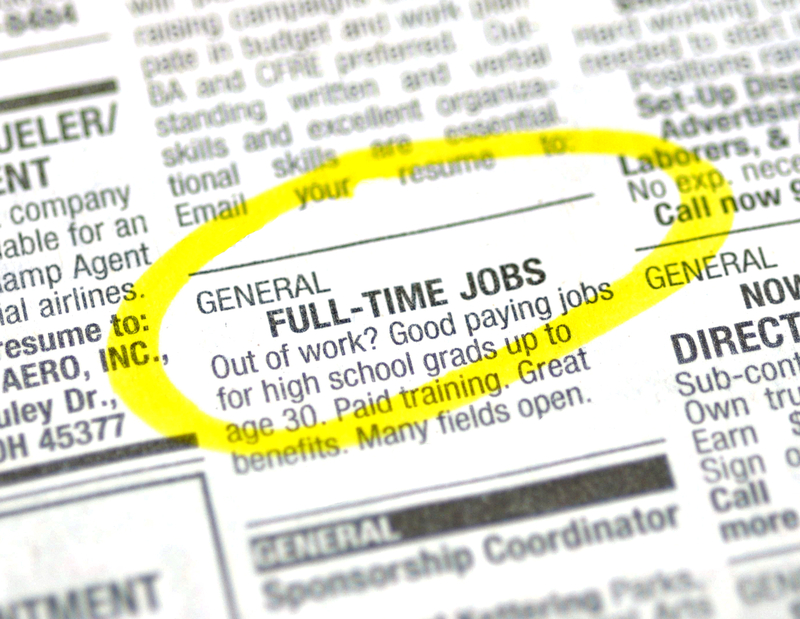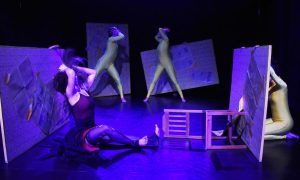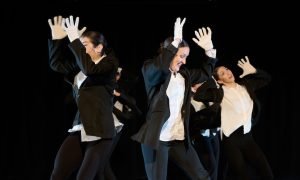Next up in our series, Casting in the age of the cloud, is about cutting to the chase.
There was a time, years ago, when a friend (a cellist by profession) had to go on unemployment at the end of a long-term contract (as those of us in the performing arts are wont to do from time to time). It is an unfortunate norm in our industry, especially in North America.
Now in Canada, one of the conditions one must agree to in order to receive unemployment benefits is one that requires regular job searches and obliges us to apply for any job that falls within our skill set. At the time, there were also regular mandatory in-office appointments with a government employee, to talk about job applications that have been submitted and opportunities that should be considered. It is important to note that the government employees who run these appointments are also there to suggest potential job and career strategies.
Yes, a government office employee suggesting career strategies for a musician. Some of you by now may have already anticipated where this story is going.
During one of these appointments, the government employee went through job listings with my friend. As they went through the listings, my friend pointed out the fact that there were simply no job openings for a cellist anywhere within the vicinity of the city of Montreal. At that moment, the employee showed her an audition notice for a trombone player in a professional orchestra, expressing that this was a job opportunity that she should consider applying for.
I must reiterate that she is a cellist by profession. She plays the cello. What she trained for 10 years to do, and what she obtained a University Masters Degree in, is in playing the cello. She has never studied, nor has she even played, a trombone in her life.
And she said so. To which said government employee replied, “Well, you never know. It’s still in the music field. You could possibly discover that you’ve got a natural talent in something else.”
I’m sure you can see the ridiculousness of the situation. One does not go see a doctor to be met at the doctor’s office by a roofer, on the off chance he may have some natural talent in medicine. Or because we might discover that what we really need is to have our roof fixed. One doesn’t call a plumber to come fix a bathroom leak, only to have an electrician show up at the door instead. Logic. It would seem.
But as I write this, and as you read this, and as we all read the story together and laugh among ourselves, I do have to mention that in doing so we are a bit of the pot calling the kettle black. In the hiring realm in the dance world, video is key — and when we make our video audition demos (laugh as we may at the thought process of the government employee in the my story), we will, in the same breath, turn around and use this exact same thought process when making our video. It’s curious. But very often, that is exactly what happens. I can feel the smiles dropping from your faces, so I’ll explain.
There is a running trend in the making of video audition demos that is mystifying to many of us on the receiving end of the casting funnel. I’m sure many of you will recognize it when I describe it: the artistic video that begins with the “dance has been my life since I was six years old” narrative, the audition video that primarily showcases choreography, the video edited professionally with flash cuts and angles that one would expect to see in one of the Mission Impossible movies. Any uncut and clearly visible excerpts of the dancer dancing — secondary. Sometimes even hard to find amid the noise.
After having gone through and watched video submissions for over 16 years, my main reaction is disbelief, and, I do admit, with some frustration mixed in. Because the message that those video submissions seem to cry out is, “Well, you never know. It’s still in the arts field. You could possibly be interested in my natural talent in something else.”
Given. I could be. But probably not. Because that…is simply…not…what was asked for. It does not fulfill the immediate need that we, in most cases, have limited time to fulfill. So, although it is possible that a natural talent in something else could catch my eye, chances are that it won’t. Because that would take time that, for the most part, I just don’t have.
A dancer casting call means that I would be looking for a dancer. I would not be looking for a film editor. I would not be looking for a movie director. When you are applying for a job as a dancer, it is not the time to try out new video concepts, costume concepts, to showcase your choreography skills or how creative you are at storyboarding a film. It’s irrelevant, and takes focus off of what people need to see you do, so that they can accomplish what they are trying to do. And, I must add, in as efficient a way as possible.
Which in no way means to not show that you have other skills. I’m all for letting directors know you have other skills; in fact, I strongly recommend it. Those extra skills can give you an edge over another candidate for the same job. But if the job is for a dancer, the principal required skill is still dance. It’s not acrobatics. It’s not video directing. It’s not circus.
So make sure that your video answers the principal need first. Keep the extras as extra, and cut to the chase. If the aforementioned plumber coming to fix the bathroom leak also happens to have skills as an electrician, then yes, that is good to know and could be useful later on. But I still need the leak fixed pretty much immediately; I don’t have time for him to sell me his skills as an electrician while in the meantime my bathroom is flooding.
To summarize in direct terms: if it takes too long to see what you can do, most of us in the casting field will just stop, put it in the “submission not retained” pile, and move on. It’s unfortunate, but remember that although it may be a question of one video submission for you, for the receiver it could be 100. Or 1,000. I say this without exaggerating, and I say this from experience.
As an artist myself, I can empathize with the need to create story, and to tell it in the way we feel it best represents us. I understand the need to express oneself in a genuine manner, and I understand the need to take the time to develop that personal story. But what one must remember is that the audition process in itself is not the story. The purpose of the audition process is to give us a glimpse into the artists’ abilities — in order to choose who will be telling the story. In a production, creators will not only be looking for collaborators who can express themselves effectively and have the technique to do so but also those who can also understand direction, context and, more importantly, who can adapt to changes in that context. They’ll want people who can understand the endgame but can also understand that there are many ways to get there.
And so the highest value often comes with the artist who can tell when a message needs to be concise and when it needs to be developed. Showing this ability starts from the very beginning of the audition process. From first application.
The application where we can see whether or not the practical side of the artist can genuinely, and simply, cut to the chase.
By Rick Tjia of Dance Informa.















